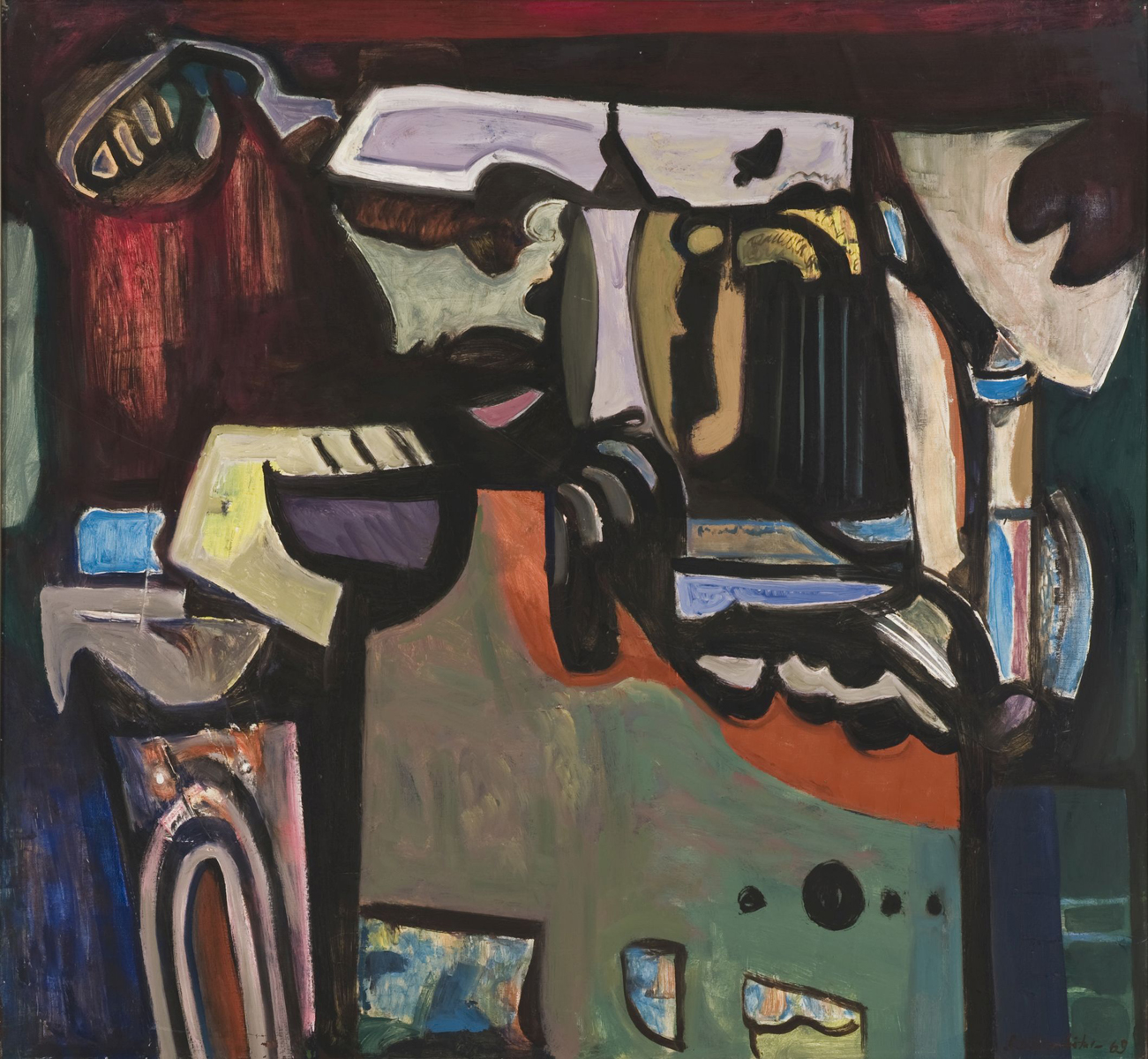At its conference in 1956, the LSSR Artists’ Union condemned Stalinism’s socialist realism, while in 1957 the First USSR Congress of Artists adopted a new program for the development of art. A qualitatively new era of art management and creative socialist realism, or socialist modernism, had begun. Artists were officially required to produce more original “interpretations of reality”, featuring laconic, abstracted imagery, emotional power, creative passion and a diversity of form. The state remained the principal sponsor of art. The leadership of the Artists’ Union continued to control not only the dissemination of art, but also the entire creative process, selecting sketches for future works and concluding acquisition contracts with artists.
In the latter half of the 1950s, a new generation of painters emerged who had completed their studies under the Soviet regime. Jonas Švažas, Jonas Čeponis, Silvestras Džiaukštas, Sofija Veiverytė, Vincentas Gečas, Vladas Karatajus, Augustinas Savickas, Aloyzas Stasiulevičius, Galina Petrova and Leopoldas Surgailis had studied socialist realism at the Vilnius Art Institute but, once the “thaw” had begun, they were tasked with overcoming this trend, since socialist reality now required new forms of expression.
Švažas, who led the AU’s Painting Section from 1959 to 1969, and the artists associated with him (bold “artistic individuals”) would today be called rebellious heroes and their movement to renew painting — adaptation through rebellion. In changing the norms of official painting and expanding the influence of the Artists’ Union, they implemented the cultural policy outlined by the Soviet government.
|
Read more: Jonas Švažas
|
A renaissance in painting meant a new search for individual expression and the revival of the inter-war Lithuanian colourist painting tradition that had much in common with Western modernism, as well as the development of the infrastructure for the dissemination of art. In 1957, the directors of the Artists’ Union rehabilitated “bourgeois” art, organising exhibitions of works by Mikalojus Konstantinas Čiurlionis, Petras Kalpokas, Justinas Vienožinskis, Vladas Eidukevičius and Antanas Gudaitis. Lithuanian artists had the chance to see abstractionist works at the Sixth World Youth and Student Festival in Moscow in 1957. Modernizmo metmenys (A Framework for Modernism), by Lionginas Šepetys, was published in 1967. That same year, the Art Exhibition Hall was opened in Vilnius, featuring four expansive exhibition spaces. However, only works with the most vibrant of colours and formidable forms could compete with the structure’s crude plaster walls and multi-coloured stone floors that resembled the speckled palette of a Lithuanian sausage. The first Baltic painting triennial was held here in 1969.
Artists wishing to make a career of their craft were still required to paint so-called “thematic” paintings, even after 1956. These were works encompassing multiple figures engaged in “socialist” narratives (war, “revolutionary” struggles, labour, recreation, sport). If we compare Augustinas Savickas’ triptych Revoliucinis Vilnius, 1918–1919 (Revolutionary Vilnius, 1918-1919, completed in 1958) with his later paintings Pirčiupių motina (The Mother of Pirčiupiai, 1959) and Kraujas ir pelenai. Fašistų sudegintame kaime (Blood and Ashes. A Village Burned Down by Fascists, 1965), it is evident that painters learned how to manage this challenge rather simply, without violating the requirements imposed by the government.




Comments
Write a comment